On the Road is a weekday feature spotlighting reader photo submissions.
From the exotic to the familiar, whether you’re traveling or in your own backyard, we would love to see the world through your eyes.
It’s Albatrossity Monday! Then we take the last of the 2022 trips with frosty and finish up the week with our 2nd day in Quebec with Argiope.
I don’t have anything else in the queue after this week, so unless some On the Road submissions arrive, it looks like we could be taking a break. OTR submissions tend to ebb and flow – usually we have about 4 weeks in the queue. Occasionally the queue is just a couple of weeks out, and sometimes we have so many that it can take 2 months or more to see yours published. But in the 4 years since i took this on, we have never run this close to running on empty.
We’ll see what this week brings!
(click the image below for a bigger, non-blurry version of the schedule for this week)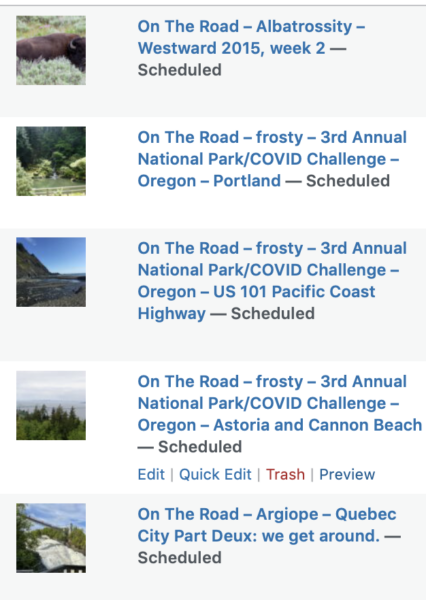
Albatrossity
Back to our excursion westward in 2015, after a brief detour for Sandhill Cranes last Monday.
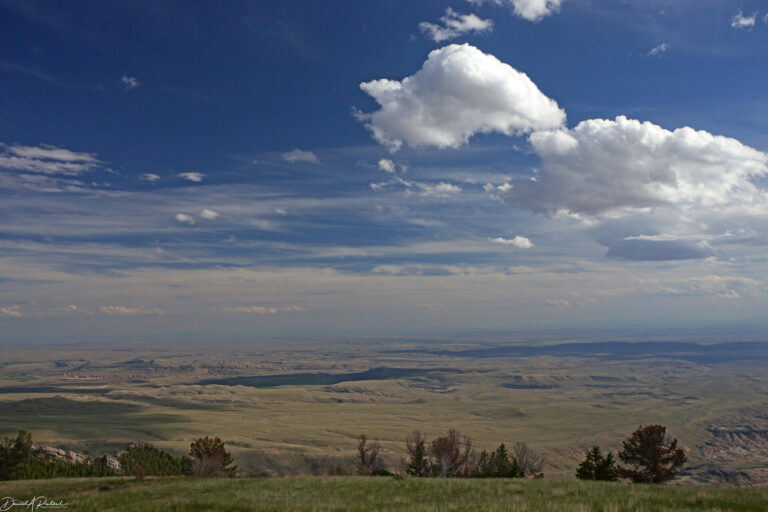
After coming down from the Bighorns, we ended up in Cody WY for the night. There are some might-fine big-sky vistas in that part of Wyoming. This was taken somewhere along the route from the Bighorn Medicine Wheel to Cody. Click here for larger image.
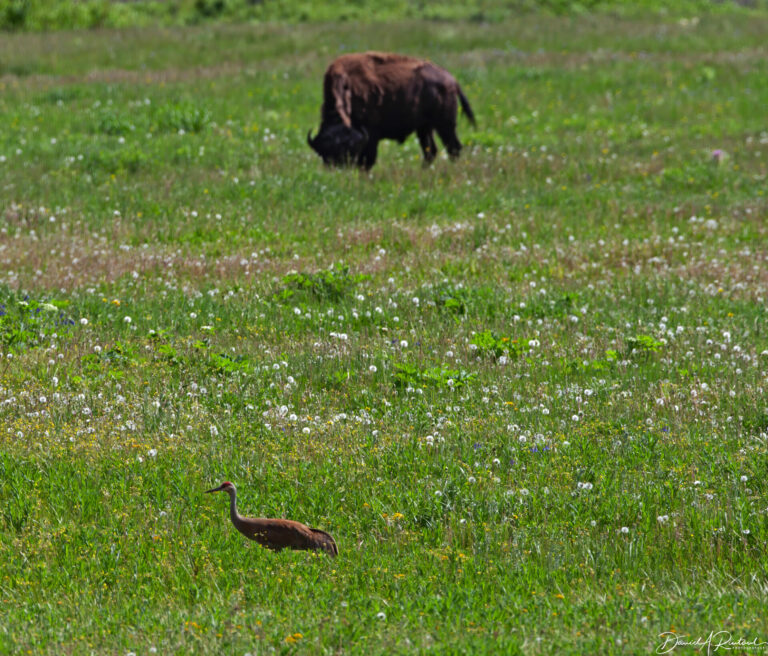
We had some flexibility in our schedule, so the next morning, a few miles after leaving Cody, we took a dirt road on a whim. It took us across the Absaroka Mountains and up over Dead Indian Pass, a very scenic route with a very unfortunate name. This was the 1877 route taken by Chief Joseph and 700 Nez Perce, who refused to accept the newest resettlement orders from the treaty-breaking USA, and instead headed eastward towards the plains. It is not clear that the dead Indian for whom the pass was named came from 1877, or earlier, or later. It is a certainty that there was no shortage of dead Indians in those days. At any rate, the route took us into the northern section of Yellowstone National Park. Would that all whimsical detours had such a good outcome. This part of the park had fewer tourists, and lots of bison and Sandhill Cranes (Antigone candadensis). Click here for larger image.
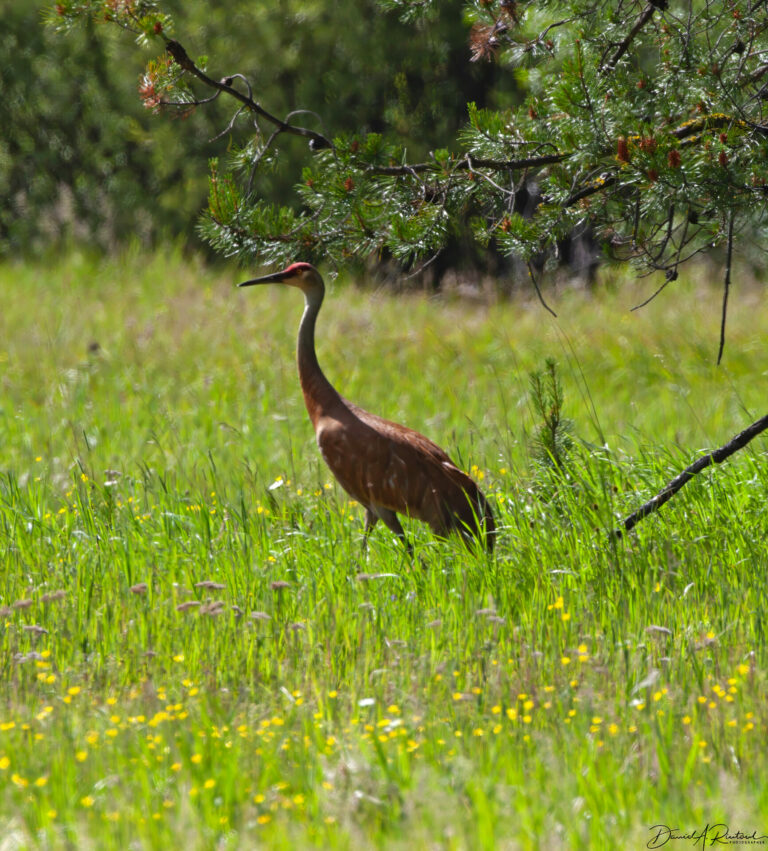
Again, by this time of year these cranes probably had one or two young colts somewhere in that meadow. But also again, we did not find them, even though the adults were definitely in evidence. Click here for larger image.
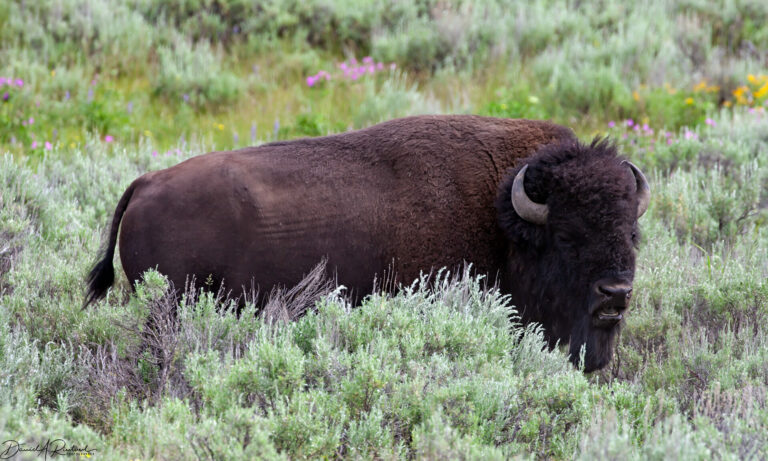
This bison bull was feeding and idling near where we stopped for lunch. He didn’t look particularly trustworthy, so we ate close to the car and kept an eye on him the entire time. Click here for larger image.
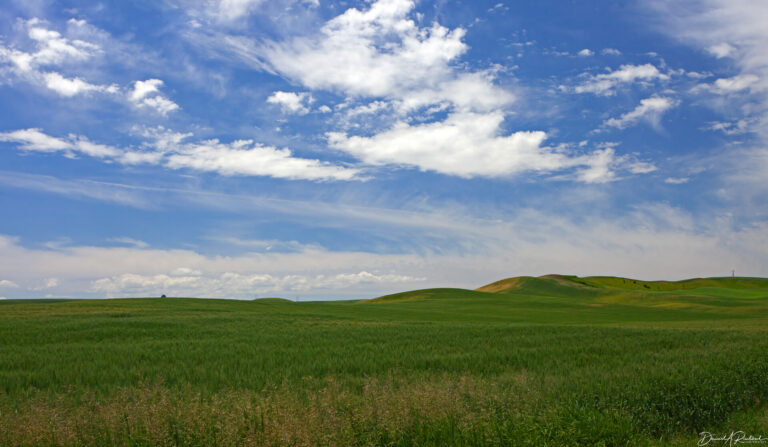
We spent the night in Missoula, and headed to our destination (Pullman WA and Moscow ID) the next day. We went via Lolo Pass, another part of the route taken by the Nez Perce in 1877. I did not take any pictures, but I do remember stopping at the Visitor’s Center, on the MT/ID line at the summit. Then we headed down to Lewiston and up to Pullman, where we were staying with some friends who both taught at WSU, but had previously been faculty colleagues at our institution, KSU. The Palouse region of Washington and Idaho is simply gorgeous at that time of year. Click here for larger image.
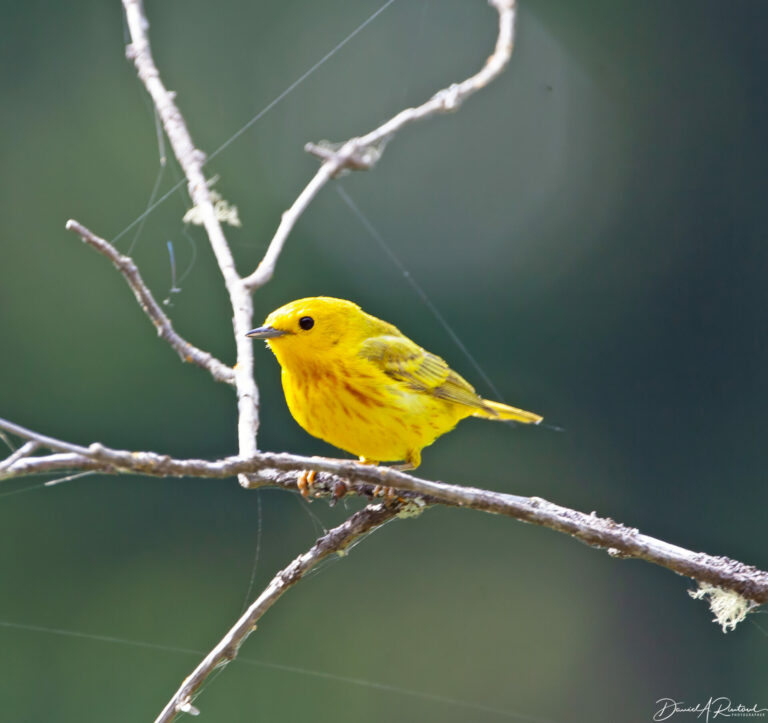
The next day Elizabeth headed to her conference in Moscow, and I headed up to a nice local birding and hiking spot, Kamiak Butte State Park. This is an elevated and forested outcrop on the otherwise rolling and treeless Palouse, and there were lots of birds. First one was this Yellow Warbler (Setophaga petechia). Click here for larger image.
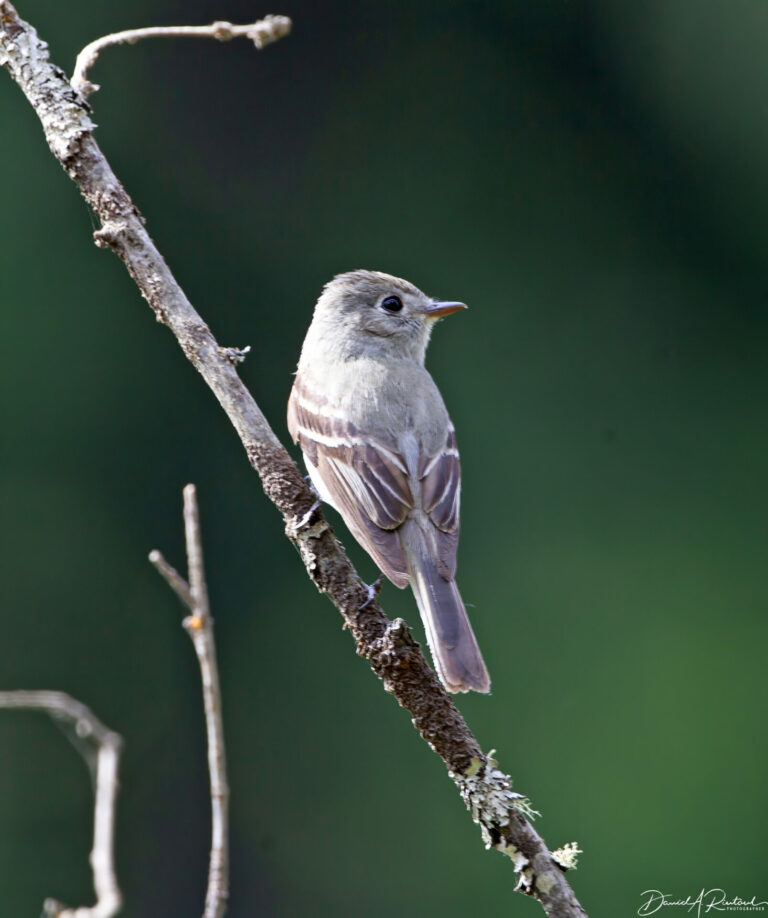
Yellow Warblers are nice-looking birds, but are also found in good numbers in my part of Flyover Country. So I was glad to find this Dusky Flycatcher (Empidonax oberholseri), and practice my ear-birding skills, since this species can best be differentiated from other Empidonax flycatchers by voice. Click here for larger image.
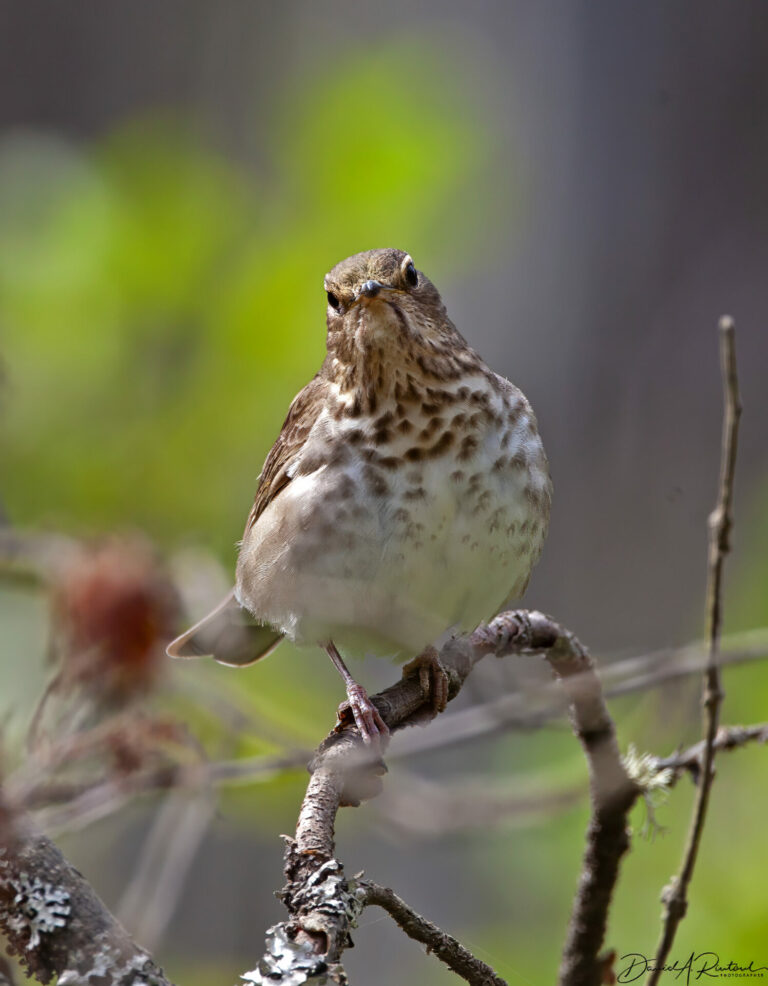
A bird that comes through Flyover Country in spring and fall, this Swainson’s Thrush (Catharus ustulatus) was not very vocal, which is too bad, since it has a lovely song and I don’t get to hear them often enough. Perhaps it was keeping busy finding food for some nestlings Click here for larger image.
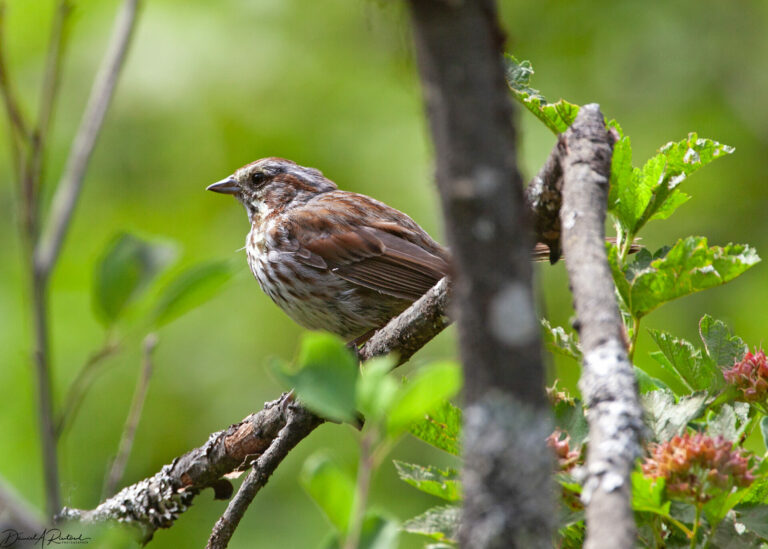
Song Sparrows (Melospiza melodia) are another species which I see in my part of Flyover Country in the winter, but which move elsewhere for the breeding season. There are many subspecies currently recognized for this species, this bird seemed larger and more rufous than our winter Song Sparrows in Kansas, and may be the morphna subspecies. Click here for larger image.
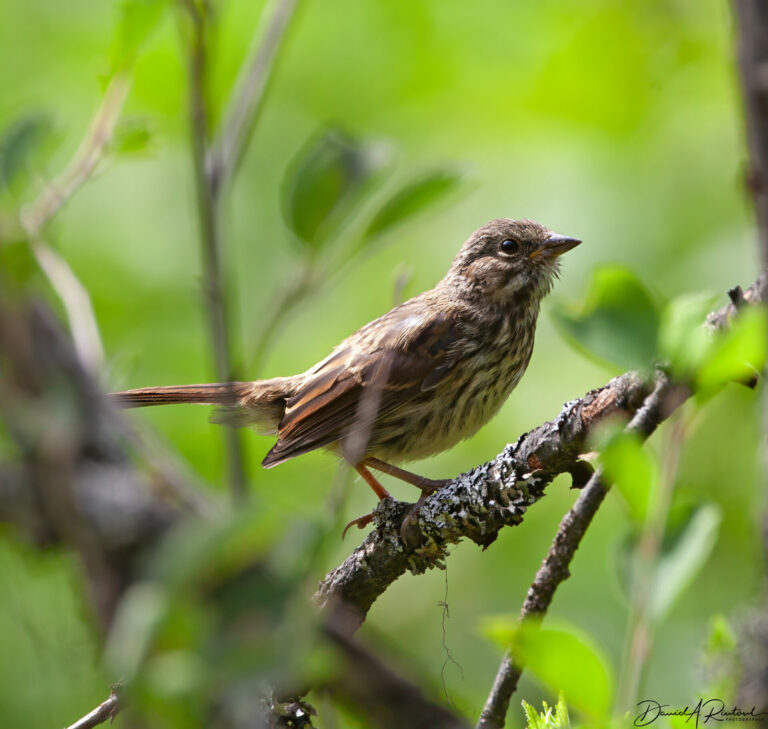
Recently-fledged Song Sparrows are something I definitely do not see in my home territory, so this fresh-plumaged and yellow-gaped cutie was a nice sighting. Click here for larger image.

Trivia Man
Is that road the one into Silver Gate and the North East entrance to the oark? Beartooth Pass is spectacular and gets 5 stars from me. Only open about 5/12 of the year but if you want a secluded getaway… Silver Gate MT is awesome.
OzarkHillbilly
The perfect post to begin my dubious return. Thanx A.
SteveinPHX
I remember seeing my 1st Yellow Warbler in a NJ woods. I was a fledgling birder and absolutely transfixed. I had no idea birds could be that beautiful!
Thank you!
OlFroth
I’m going for a hike on the C&O Canal towpath in June. Twenty-one days, 184.5 miles, Cumberland to D.C.! I should have some good pictures from that.
Dagaetch
birbs! I’ve been getting into wildlife shooting, need to go back through Albatrossity’s posts for tips.
I’ve been meaning to finish up my World Tour series, this is a good prompt to do that.
WaterGirl
@OlFroth: That would be great.
What’s a towpath?
WaterGirl
@Dagaetch: Why are you shooting wildlife? That’s so mean, what did they ever do to you? :-)
Yutsano
Ah the Palouse! My home for 11 years. I should have sued the people behind Van Wilder because, well, that was was my life! I’m a little surprised you didn’t catch any quail while you were up this way. They do tend to be quiet in the winter but they should have been around.
Xavier
Man, I love a good road trip…
Rob
never mind
Rob
@WaterGirl:
A towpath is a road or trail on the bank of a river, canal, or other inland waterway. The purpose of a towpath is to allow a land vehicle, beasts of burden, or a team of human pullers to tow a boat, often a barge. ” https://en.wikipedia.org/wiki/Towpath
The C & O Canal towpath is several yard wide and flat and relatively straight (though it obviously slowly rises), and runs continuously from Washington, DC, to Cumberland, MD.
Rob
@OlFroth: Very nice! The most I’ve walked at one clip is a couple of miles one-way. I don’t think I’ve walked all of the Montgomery County towpath in the 4 decades I’ve lived in the county. Maybe this summer?
stinger
All so gorgeous. That top photo could be an oil painting of the Old West. Just wonderful.
mvr
I really like that opening photo.
And the NE part of the park and its surrounds are probably my favorite, at least where watching wildlife is concerned. The Sandhill Cranes that spend the summer there often do have young who may or may not be seen in the tall grass. An interesting contrast with the flocks of migrating birds we see in Nebraska to see them in small family groups. I gather they turn west from here hand wind up as far away as Siberia.
Going to see the Cranes Thursday morning in a nature conservancy blind along the Platte. Somewhat coincidentally I went with a friend to Sauvie’s Island at the confluence of the Willamette and Columbia Rivers near Portland and ran into 100 or so migrating cranes gleaning corn. Perhaps they are going yet further West and North?
Albatrossity
@Trivia Man: No, I looked at the map, and the route we took was WY 296, which intersects with US 212 west of Beartooth Pass, before it gets to Silver Gate. I’ve not gone over that pass, but based on your recommendation, I think I will try to do that sometime!
@mvr: The cranes that summer in Yellowstone (and other parts of the mountain West) are the same birds that winter at Bosque del Apache in New Mexico. Compared to the birds who are on the Platte in Nebraska right now, they are relatively short-path migrants.
And yes, the birds you saw in Washington State are headed to BC and Alaska. They spend the winter in the Central Valley of California.
OlFroth
@WaterGirl: The canal boats were pulled by mules. They walked on the towpath, towing the barge behind them.
OlFroth
@Rob: I should be in Harper’s Ferry by June 18th, Calico Rocks by the 19th, Turtle Run on the 20th, Lock 21 (where I booked a stay in the lockhouse) on the 21st, and finish in Georgetown on the 22nd. You’re more than welcome to join for a few miles if you care to!
Rob
@OlFroth: Oh wow, thanks! I’ll let you know if I can. Good luck & have fun with your adventure!
OlFroth
@Rob: My 14 year old daughter is coming along for the leg between Cumberland and Hancock, along with a few friends from work. Post Hancock, I’m on my own!
mvr
@Albatrossity: Thanks!